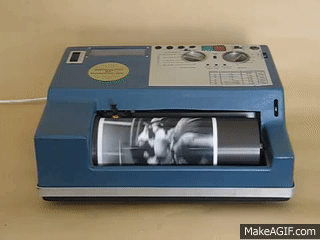“These kids were homeless, street kids,” Waak said, referring to a photo of three Brazilian boys who couldn’t have been more than 10 years old with an older woman waving her finger in their faces. “She’s scolding them, telling them not to pick pockets.” The boys in the photo are smiling despite her admonishment and Waak’s face looked similar to theirs when recalling the moment.
Waak tells the story of his career humbly. He came to Washington D.C. in 1976 from Chile and found work as a photographer for the George Washington Medical Center documenting their procedures and medical techniques for science. Inspired by Hungarian war photographer Robert Capa, Waak began photographing demonstrations and protests around the White House and Capitol and struggled to sell his images locally, as a freelancer. In 1985, when Reuters was expanding to compete globally with rival wire service AFP and overtake UPI, Waak’s knowledge of both English and Spanish landed him a job at the photo desk as an editor.
“Right place, right time,” Waak said. “I was lucky.” The moments he captured that now grace his walls in black wooden frames show that he had much more than pure luck.
He has been traveling the globe as a professional photojournalist ever since. His images have been featured in numerous print publications around the world, including the Washington Post and the New York Times. After retiring from his staff position at Reuters in 1991 he continued to use his camera to make a living as a photographer for the Pan American Health Organization, the World Health Organization and the United Nations.
At a time when the instant gratification of Twitter, Instagram and Snapchat dominate the media landscape, Waak’s stories of the past provide an anachronistic glimpse of how the glory days of photojournalism were both much simpler and much more complex.
Waak remembers using a drum transmitter to send his work to Reuters subscribers around the world. “The best transmission time was around 7 a.m. for sending to Hong Kong and 9 a.m. for Brussels if the weather was cooperating,” he said. The photographer would have already developed his photos in the dark room and attached typed captions to the best ones before he even approached the breadbox-size machine connected to the rotary telephone and placed his image on the drum. A black and white photo would take at least 6 minutes for the machine to spin and scan line by line, a color photo 3 times as long.
“If there was thunder or a storm, you could forget about it, the photo wouldn’t come out correctly,” Waak said as he recalled the good old days.

A portable wirephoto transmitter.
(Credit – Esteban Mac Allister – youtube.com)
“You had to be much more selective, you picked one or two” Waak continued. “Nowadays you can fill a memory card and just give them the whole thing, but back then you couldn’t send so many images.”
Richard Lanier, a commercial photographer and photography professor at Stratford University, agrees. He says that photography has gotten to the point where almost anyone can do it.
“The technology has superseded the talent in a sense,” Lanier said. “You no longer need a specialist to do what photographers used to do.”
Waak’s wife of 25 years, Pilar, thinks that modern journalism has lost some of the story-telling ability that her husband’s photos contain. She has a gleam in her eye when she looks at the photos on her walls and says that they are part of the reason she fell in love with Armando. When Waak traveled to Central America to document the civil wars that ravaged the region in the 1980s, he and Pilar were not yet married. She says that looking at his photographs taught her things that she had never known about history, politics, society and people.
“Real photographers see the world differently,” Pilar, said. “They have a different kind of soul. You can’t show that with a camera in a telephone.”
Despite the advances in technology, both Waak and Lanier think that some old-school skills of the photographer are still relevant.
“You still have to be able to tell a story, you still have to know how to interact with people, you have to know what looks good compositionally,” Lanier said. “But to produce it, to get it into a medium that other people can see, it’s available to anybody now.”
“Nowadays a monkey can take a picture, just push the button,” Waak said. “But a monkey doesn’t have the eye.”
